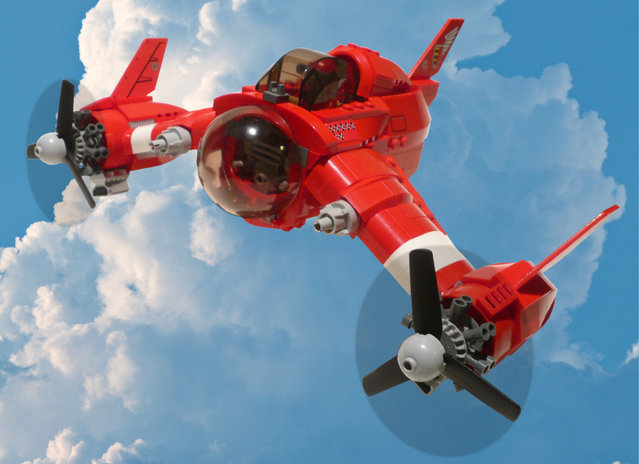
“Red Zephyr. I always meant to do this, but never got around to it (put in a background that is). Well, now I have – the Red Zephyr flies again!”. (Photo and comment by Jon Hall)
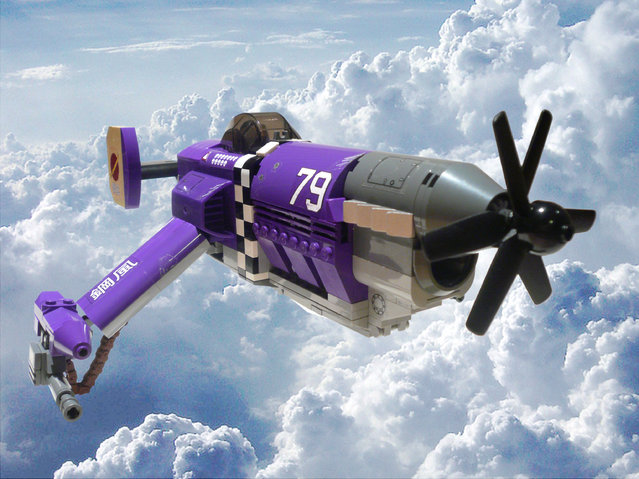
“Steel Wind. The mysterious mercenary known only as Lady Katana pilots a heavily customised P-79 Stratofighter, the “Steel Wind”. The cargo bay has been modified to fit two fragmentation rocket launchers and at the tip of each wing is mounted a 20mm machine gun”. (Photo and comment by Jon Hall)
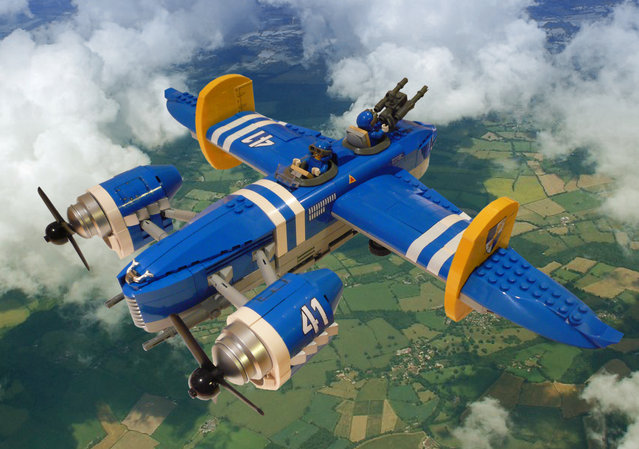
“Blue Lightning. The H-44 tactical bomber of the Heliconian Royal Air Force nicknamed the “Blue Lightning” for its speed and ability to inflict massive damage on the ground”. (Photo and comment by Jon Hall)
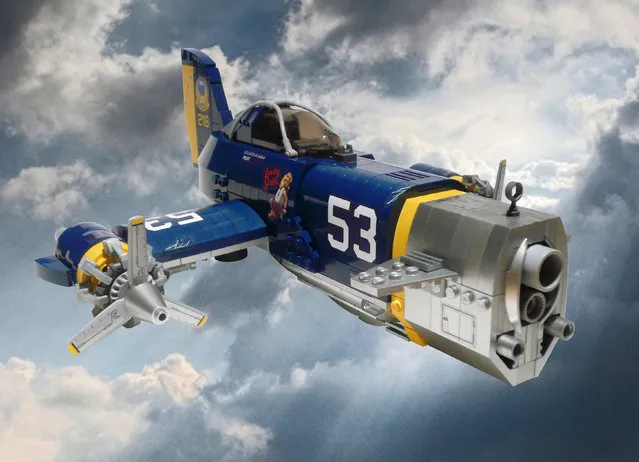
“Skyhammer 01. The P-72A gunship, codenamed “Skyhammer” was developed by Arcadia Aeronautics for the Kovlakian Airborn Artillery. It was devised as a counter measure to the threat of the new armoured Zeppelins, and proved extremely effective against them. It also saw extensive use in the Battle of Syrrah where squadrons flew low in night attacks to destroy the city’s heavily fortified walls. The plane here is painted in night camo colours and is piloted by Lt Colonel Dirk Salvo. It is armed with two 20mm front–firing machine guns and a 400mm artillery cannon which carries a maximum of six shells”. (Photo and comment by Jon Hall)
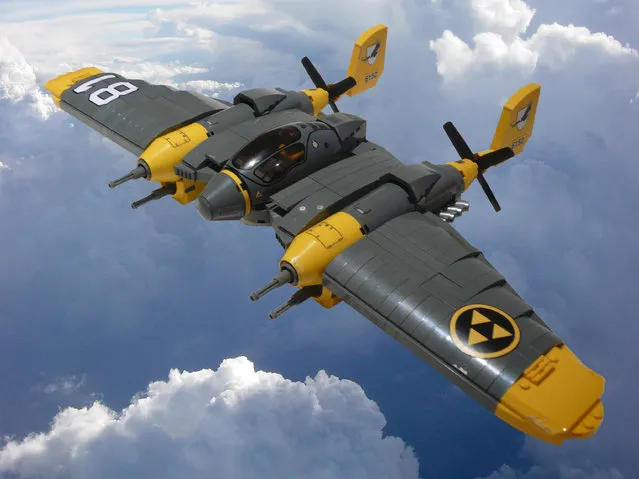
“Iron Condor. The B-414 Stratobomber the “Iron Condor” is armed with four forward facing 18mm machine guns and a payload of six 3000lb bombs. Unusually for a bomber of this size, the crew consists of a single pilot”. (Photo and comment by Jon Hall)
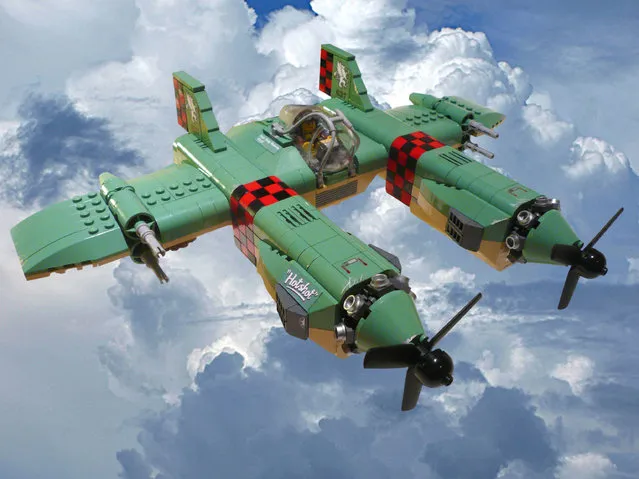
“D-61 Gryphon. In the years after the Great War, aces were often hired to protect air freight and skyliners from sky pirates. Such pilots were called freelancers. Captain Betty Redwing was one of the most successful freelancers – racking up a total of 54 downed planes in 8 years. Her popularity grew until she became a major celebrity. Her plane of choice was the D-61 Gryphon, here painted in Betty's own personal livery”. (Photo and comment by Jon Hall)
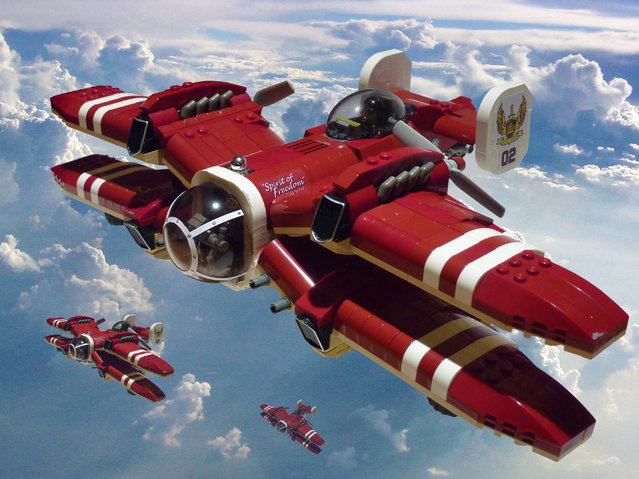
“The V-30 Warhawk was designed by Blackshaw Avionics as a long-range fighter and was primarily used by the Arcadian Air Force for escort duties. The plane pictured is the “Spirit of Freedom” and was one of the four planes that escorted the Arcadian Royal Airship during and after the Great War. The three other fighters were the “Spirit of Hope”, the “Spirit of Justice” and the “Spirit of Destiny”. All pilots were hand-picked by the Head of Airborne Forces and included some of the very finest pilots in the Kingdom. The crew consisted of one pilot and one gunner although both cabins were fitted so that if either crew member was killed the other could take over their duties. Each Warhawk was fitted with four Haverlock “Banshee” engines and four 24mm machine guns”. (Photo and comment by Jon Hall)
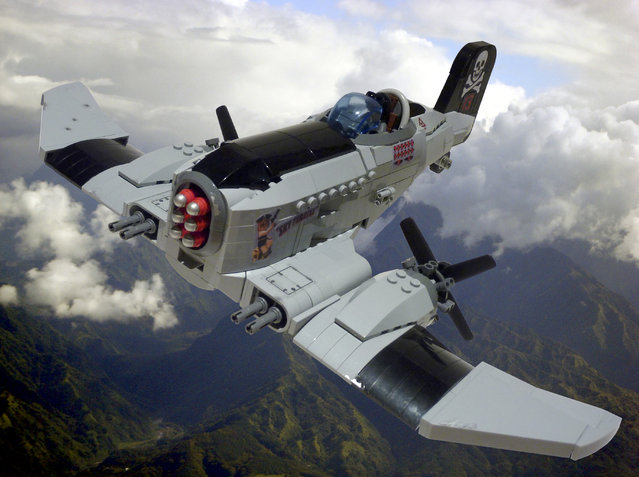
“P-23 Skywolf. Sky pirate Grant “Mad Dog” Hendricks piloting his P-23 Skywolf. A member of the feared Crossbones Gang they terrorised air shipping, stealing cargo and holding passengers for ransom until Hendricks was finally shot down by flying ace Betty Redwing with a lucky shot to the nose! The rest of the gang were rounded up and imprisoned except for "Ratface" Watkins who escaped and was never found. The plane was originally developed for the Kovlakian Air Force and carried six “Hades” shrapnel missiles but after several incidents of its missiles misfiring and blowing up the plane, they were quietly scrapped. A few found their way onto the black market where they were snapped up by sky pirates for whom their safety record wasn't a problem...”. (Photo and comment by Jon Hall)
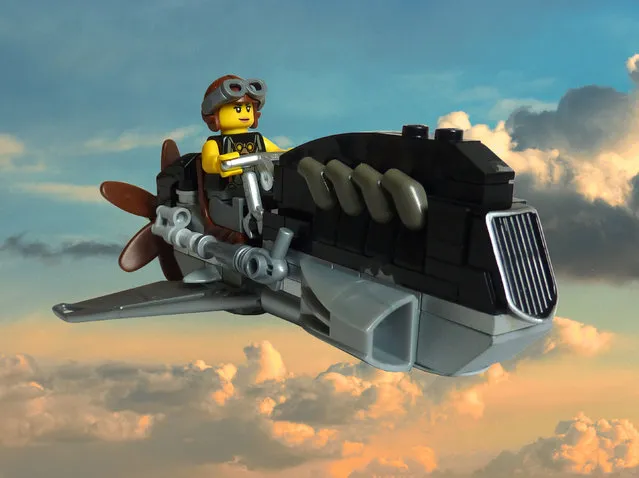
“Skybike. Vanessa Grun with her custom-built skybike. The bike is built around a V8 Haverlock “Banshee” engine salvaged from a downed V-30 Warhawk”. (Photo and comment by Jon Hall)
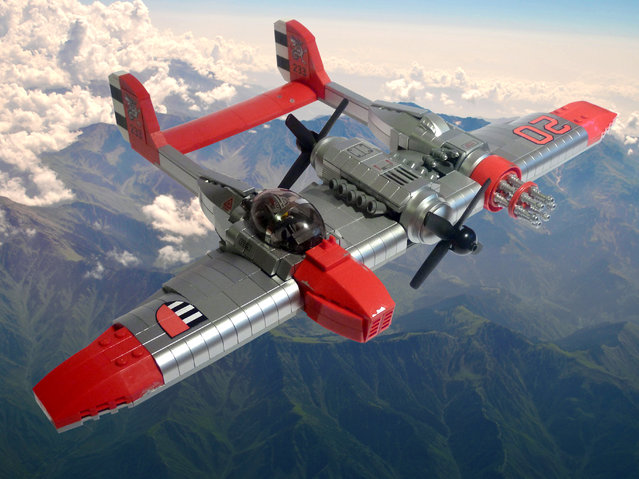
“The E-73 Wyvern was developed by Laputa Skyyards for the Keshian Republic in the last year of the Eastern Secession War. Designed for close ground support, its 35mm rotating “Hellfire” cannon could pierce all but the heaviest armour. Wyverns were usually only sent on short hit and run sorties as they rapidly ran out of ammunition due to the Hellfire's rapid fire rate”. (Photo and comment by Jon Hall)
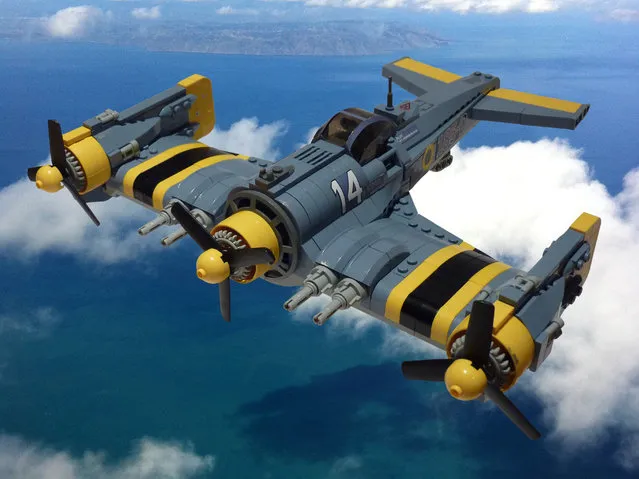
“The F-26 Tempest became the backbone of the Heliconian Royal Air Force fighter squadrons during the First Great War. Replacing the outdated Zephyr fighters the Tempest boasted four 15mm front facing wing fixed cannons and three of the new A-2 Hellion engines, making it the fastest plane in the skies at the time. Its manoeverability was a vast improvement on the Zephyr and it rapidly became a favourite among Heliconian fighter pilots”. (Photo and comment by Jon Hall)
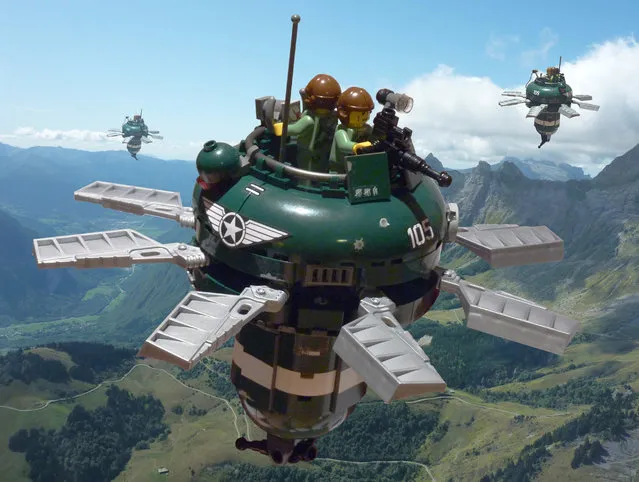
“Q-15 Whirlwind 01. The Q-15 Whirlwind was an experimental aircraft that was primarily used for reconnaissance duties although it was also occasionally used for light air support (like the version we see here, the Q-15E, which had a 22mm machine gun fitted to the underside). The radical design of the craft was the result of a need for a small vertical take off and landing vehicle and was the brainchild of legendary engineer Ernst Varga. To counter the torque problems associated with the rotor engine, its exhausts doubled as stabilizing jets, providing thrust counter clockwise to the rotor’s clockwise movement. The crew usually consisted of two - a pilot and a gunner/spotter. Although other craft went into production from the Q program the Whirlwind was the most successful, and in all over 2,000 were produced”. (Photo and comment by Jon Hall)
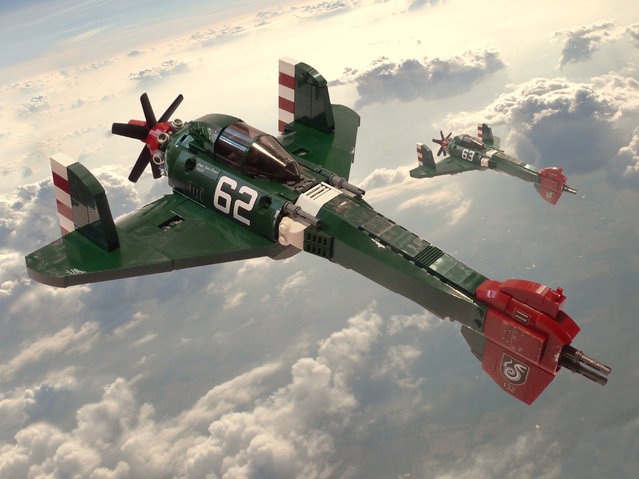
“S-113 Viper. After Heliconia was invaded, several of its border cities which were important industrial centres were lost. Heliconian High Command comissioned several new planes to respond to this threat, one of which was the Viper. Designed to be made quickly, by hand, with materials readily available, the frame was a monocoque construction with wooden composite covering, making it both light and strong. Vipers would be scrambled to defend Heliconian airspace and prevent further incursions into their country. In this repect they were a great success, their speed and powerful weaponry making short work of any enemy fighters and bombers they encountered”. (Photo and comment by Jon Hall)
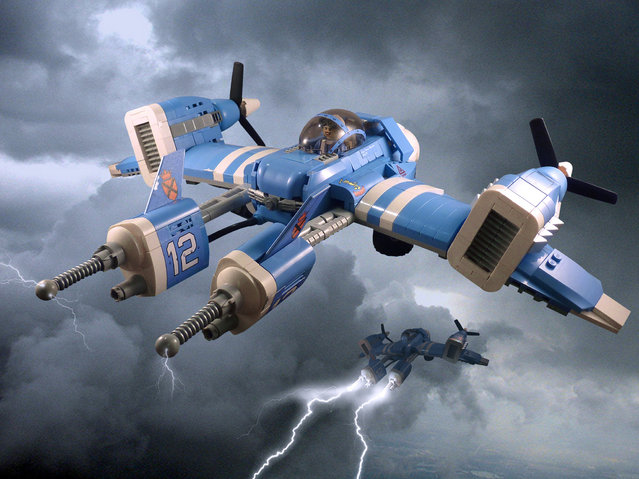
“The T-160 Thunderbird (pictured here with pilot Capt Penny Bowman) was an experimental fighter developed by the Palladite Republic. The Palladites, renowned for their inventive but impractical ideas fitted the fighter with twin Arc guns, each one housed in an electrically insulated nacelle at the front of the plane. Each Arc gun was powered by its own generator capable of creating 12,000,000 volts. Although the gun had a range of well over a mile, the weapons were very difficult to aim and pilots eventually resorted to dive-bombing their targets at high speed and firing their weapons when in close proximity to ensure a hit. When they did hit, the Arc guns would cripple their target's electronics, sometimes electrocute the crew, and occasionally ignite the fuel tanks. The guns would often short circuit so eventually a 12mm machine gun was fitted beneath each Arc gun in case the main weapon failed. Although feared for their unpredictable nature, Thunderbirds did little to effect the outcome of the war and only 152 were ever made”. (Photo and comment by Jon Hall)
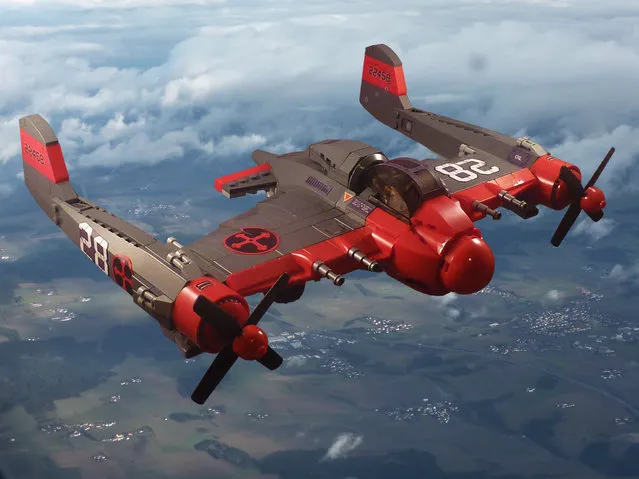
“F-31 Vanguard. The Vanguard was a multi-purpose fighter of the Royal Heliconian Air Force. Its versatility and adaptability meant it was used for many roles in the Great War including fighter, escort, light bomber and torpedo bomber. They were a vital component of the Heliconian air defences along with the F-26 Tempest and the F-32 Paladin”. (Photo and comment by Jon Hall)
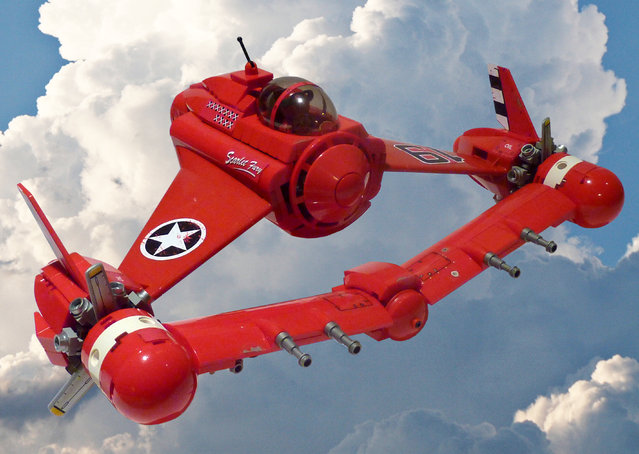
“Scarlet Fury. Scarlett McCloud, daughter of the famed flying ace Aaron McCloud with her fighter, the Scarlet Fury. A formidable pilot at age 19, she took to the skies after the death of her father, to find the man who shot him down and exact her revenge. An experienced engineer, after years of helping repair and rebuild her father’s plane, she built the appropriately named Scarlet Fury based on the design of her father’s famous fighter, the Red Zephyr. After she eventually succeeded in her mission she briefly became a hired gun, or “freelancer” flying escort for various airships and skyliners before retiring to become a successful aircraft engineer. The Fury is fitted with two 1450 horsepower McGarrow D-5 Radial Engines and four fixed forward-facing “Brimstone” B2 machine guns”. (Photo and comment by Jon Hall)
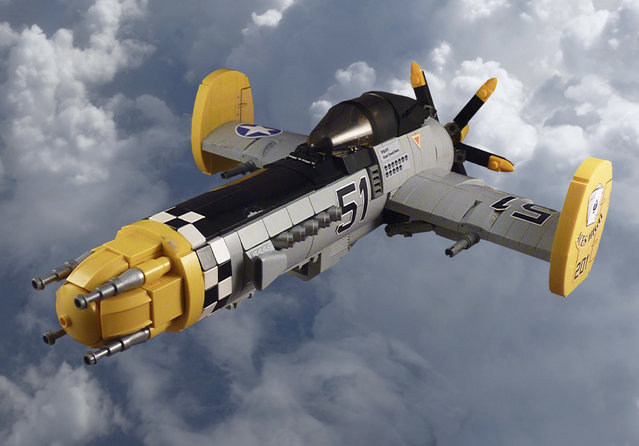
“P-70 Predator. The Predator was designed as a heavy fighter, its large fuel tank and large ammo cache meant it could go on extended sorties and stay in the air longer before refuelling than other similar size planes. They were instrumental in the defence of the Meneres Straits where they earned their nickname of the “Sky Shark”.”. (Photo and comment by Jon Hall)
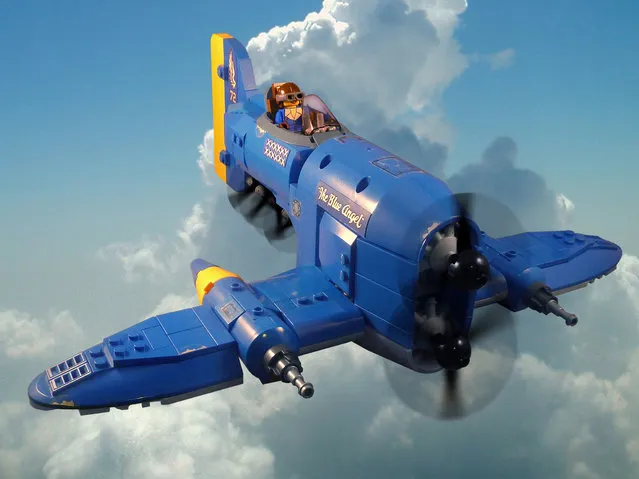
“Flying Ace Veronica Andrews in her P-21 Avenger, the Blue Angel”. (Photo and comment by Jon Hall)
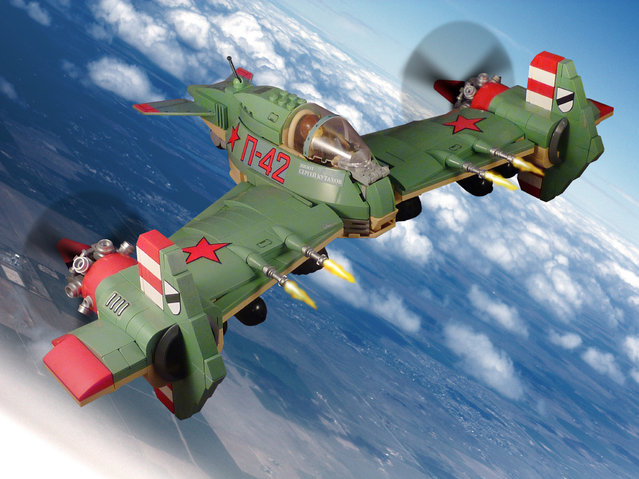
“Captain Sergei Kutakhov in his D-74 Partisan fighter-bomber”. (Photo and comment by Jon Hall)
11 Feb 2013 10:36:00,
post received
0 comments
